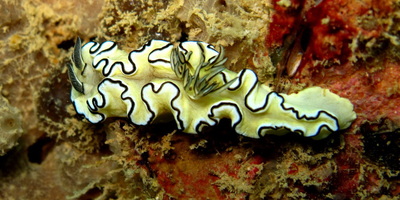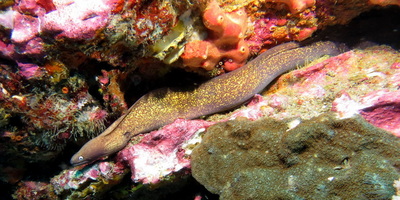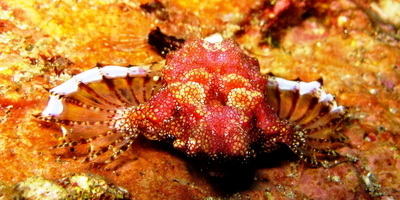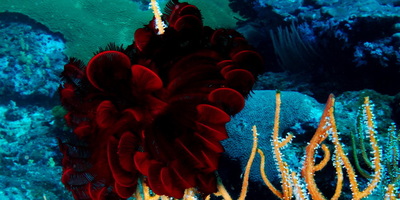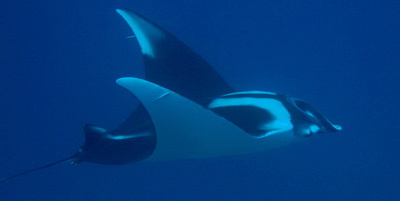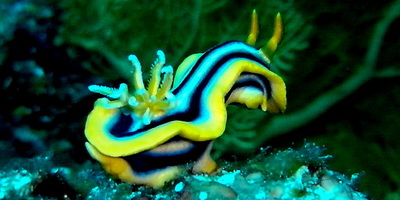Phuket Dive Guide : King cruiser
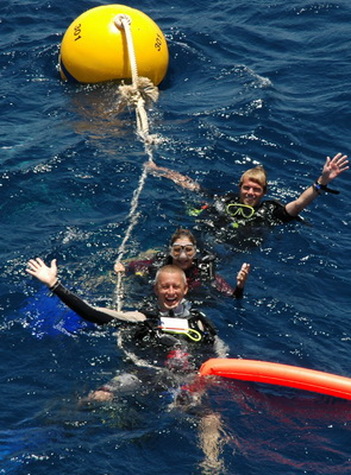
About the location and site
On the 4th of May 1997, the 85-meter passenger ferry 'King Cruiser' was on a routine run to the Phi-Phi Islands with 500 people on board. For unknown reasons it strayed off course and struck Anemone Reef, ripping one of her twin hulls open. The boat sank within the hour near the reef but fortunately, no lives were lost. It lies in an almost perfect upright position at a depth at 30 metres, with the captain's cabin located at the shallowest area of 12 metres.
If the Phuket dive scene had been previously lacking in anything, it was a decent shipwreck for divers to explore. This unplanned addition to Anemone Reef has become one of the most popular dive sites around Phuket. With its width of 25 metres, multiple decks and spacious open areas the King Cruiser wreck is providing sheltered living quarters for large numbers of fish and crabs. The wrecks location near to Shark Point has undoubtedly has much to do with its soaring fish population, and the older and more broken up the wreck becomes the more fish it attracts. Over time, this will become an even better dive site as the wreck becomes more encrusted with a variety of colourful corals. It seems strange that the fish prefer to live in a rusting metal hulk rather than the natural sanctuaries of Anemone Reef and Shark Point but it makes for a great dive location!
In the last few years, however the wreck has suffered from its time underwater and not safe anymore for “swim through” penetration. In August 2003, the floor of the stern top deck collapsed through onto the main deck. In recent years, there has been significant deterioration to the midsection and the bow areas too. However, exploring the outside of this wreck is still an exciting experience.
On the 4th of May 1997, the 85-meter passenger ferry 'King Cruiser' was on a routine run to the Phi-Phi Islands with 500 people on board. For unknown reasons it strayed off course and struck Anemone Reef, ripping one of her twin hulls open. The boat sank within the hour near the reef but fortunately, no lives were lost. It lies in an almost perfect upright position at a depth at 30 metres, with the captain's cabin located at the shallowest area of 12 metres.
If the Phuket dive scene had been previously lacking in anything, it was a decent shipwreck for divers to explore. This unplanned addition to Anemone Reef has become one of the most popular dive sites around Phuket. With its width of 25 metres, multiple decks and spacious open areas the King Cruiser wreck is providing sheltered living quarters for large numbers of fish and crabs. The wrecks location near to Shark Point has undoubtedly has much to do with its soaring fish population, and the older and more broken up the wreck becomes the more fish it attracts. Over time, this will become an even better dive site as the wreck becomes more encrusted with a variety of colourful corals. It seems strange that the fish prefer to live in a rusting metal hulk rather than the natural sanctuaries of Anemone Reef and Shark Point but it makes for a great dive location!
In the last few years, however the wreck has suffered from its time underwater and not safe anymore for “swim through” penetration. In August 2003, the floor of the stern top deck collapsed through onto the main deck. In recent years, there has been significant deterioration to the midsection and the bow areas too. However, exploring the outside of this wreck is still an exciting experience.
Around the propellers at 32 metres, large lionfish roam the place. They are also found around the toilet area of the main deck. Hard to spot as they are so well camouflaged against the rusting steel and corals, numerous scorpion fish live on the wreck. For the macro-lovers and photographers, there are many nudibranchs and crabs, which inhabit the nooks and crannies. You definitely encounter different kinds of eels including the Honeycomb moray eel. Especially in low currents, the boat can be virtually obscured by huge shoals of reef fish like rabbitfish, surgeonfish, and fusiliers. Bigger hunting fish like trevally, snappers, mackerel, and yellowtail barracuda are never far away.
The frequent strong currents and low season rough seas make the diving suited to more experienced divers.
The frequent strong currents and low season rough seas make the diving suited to more experienced divers.
